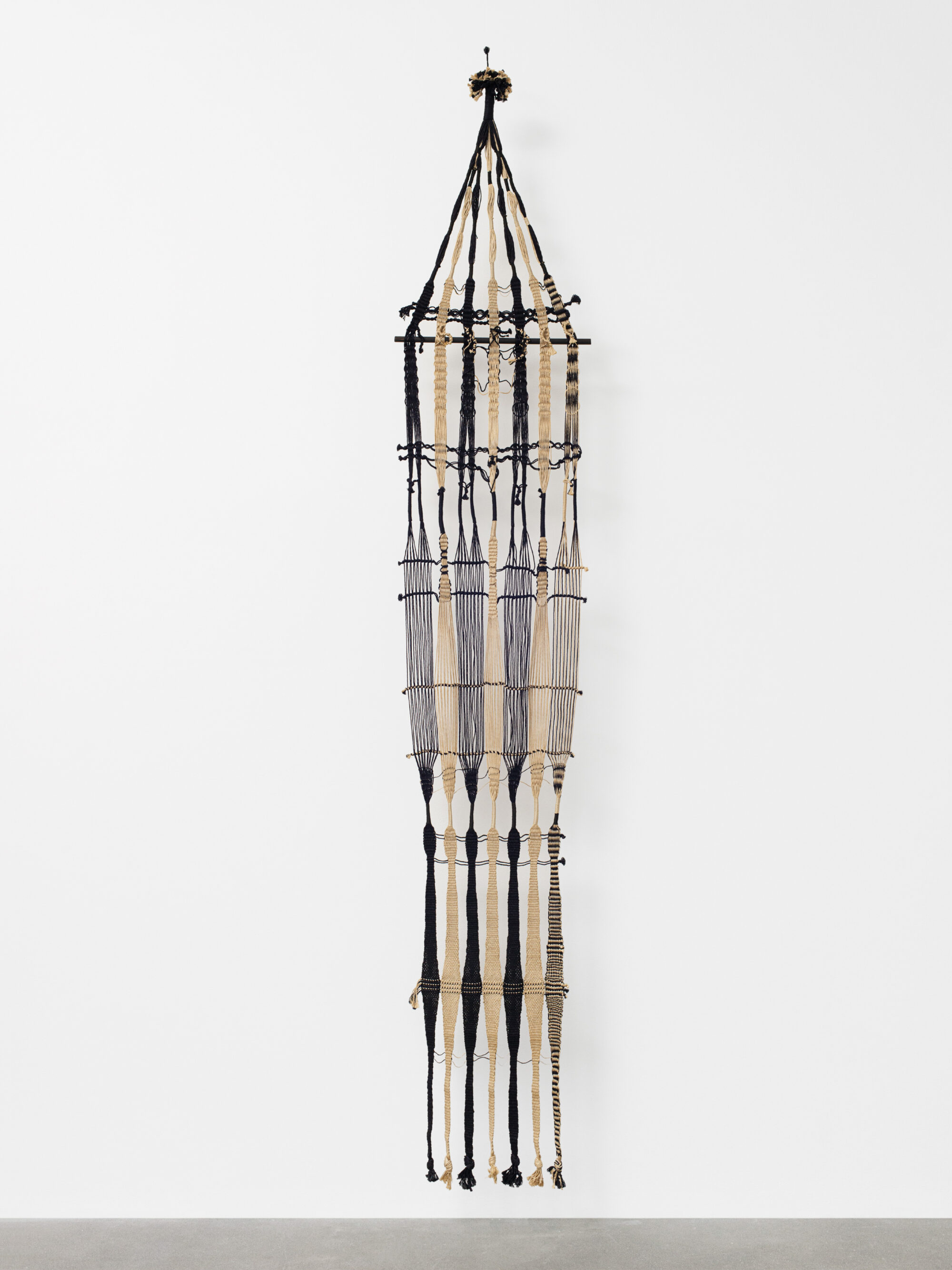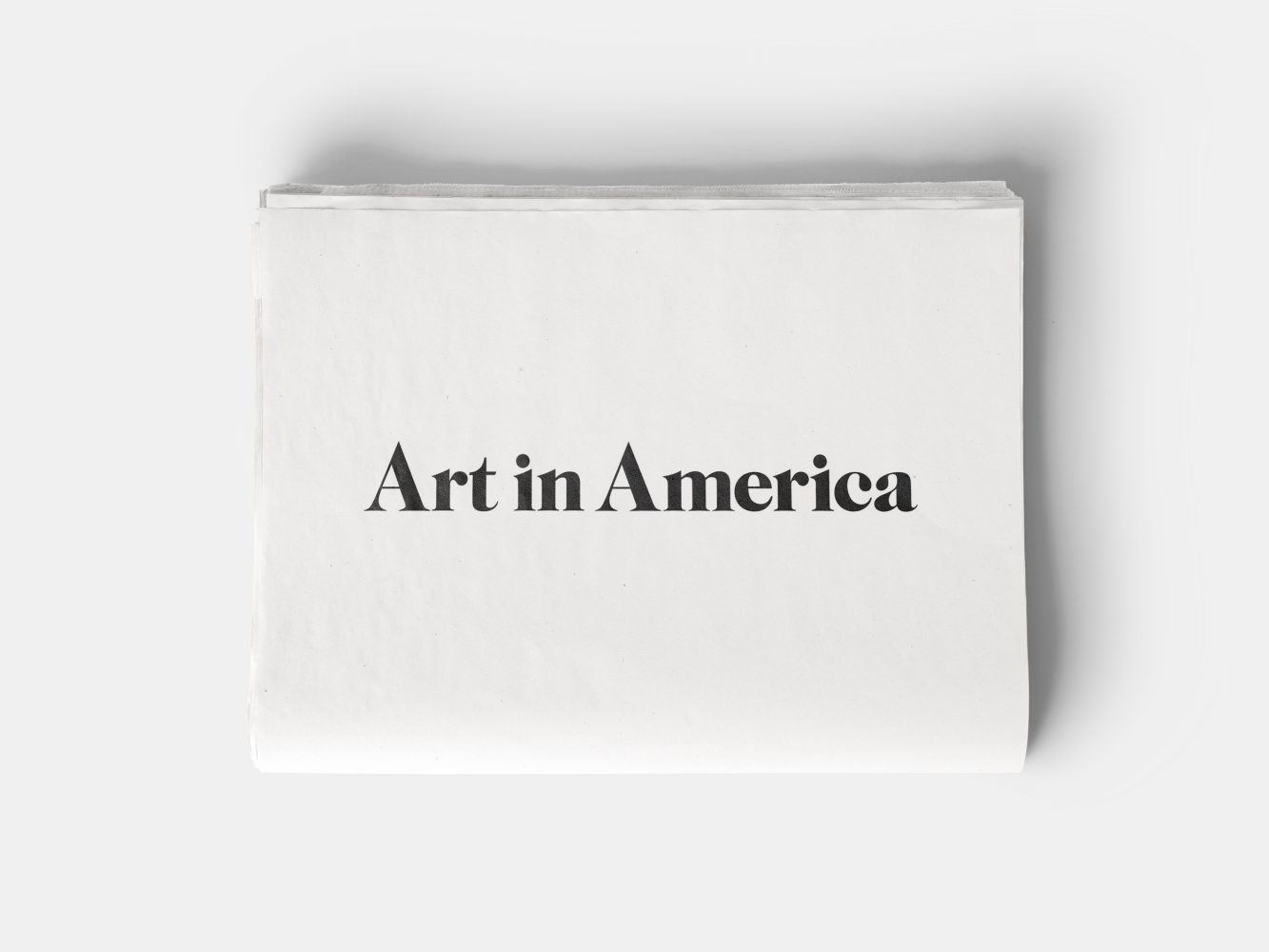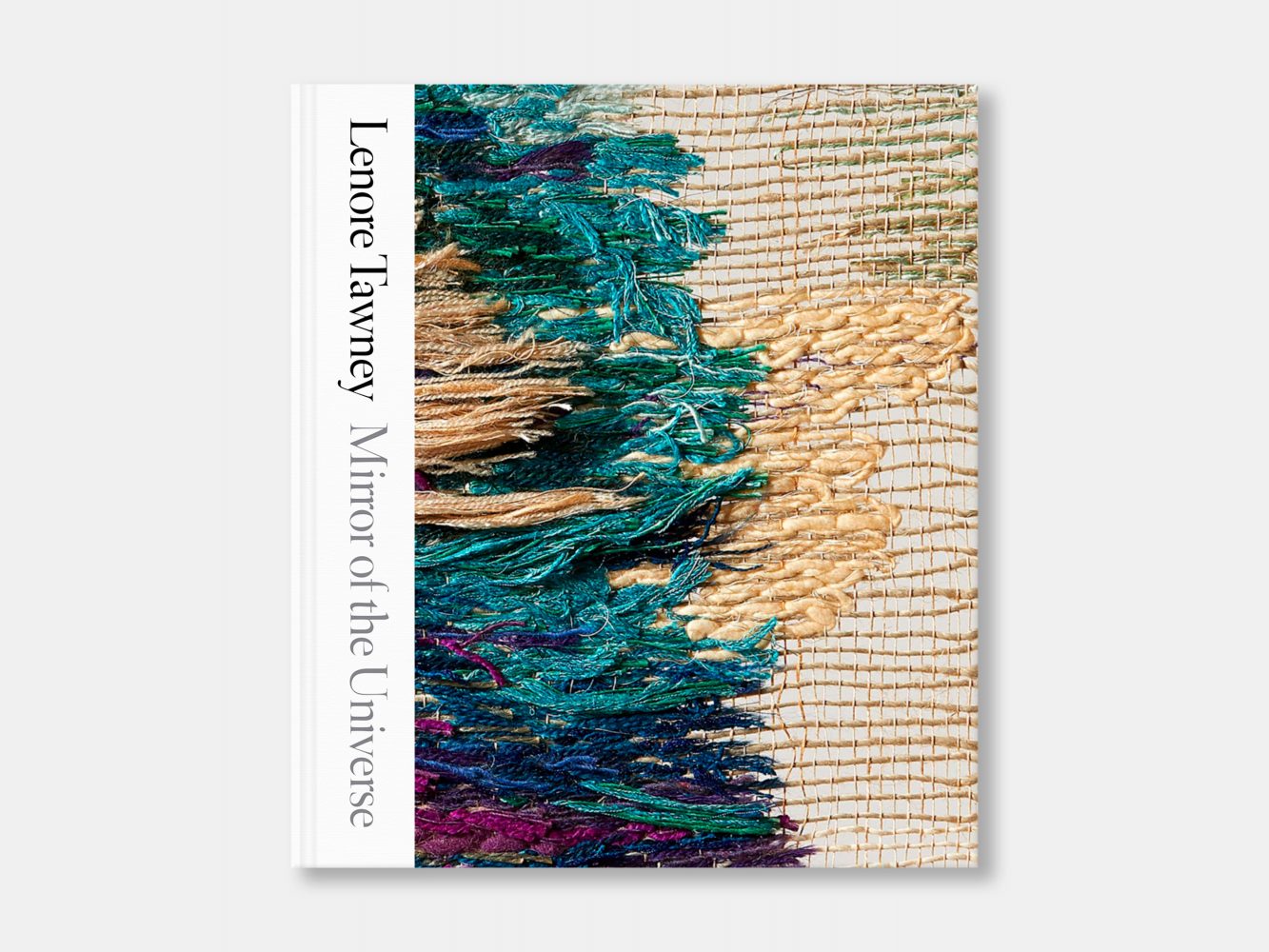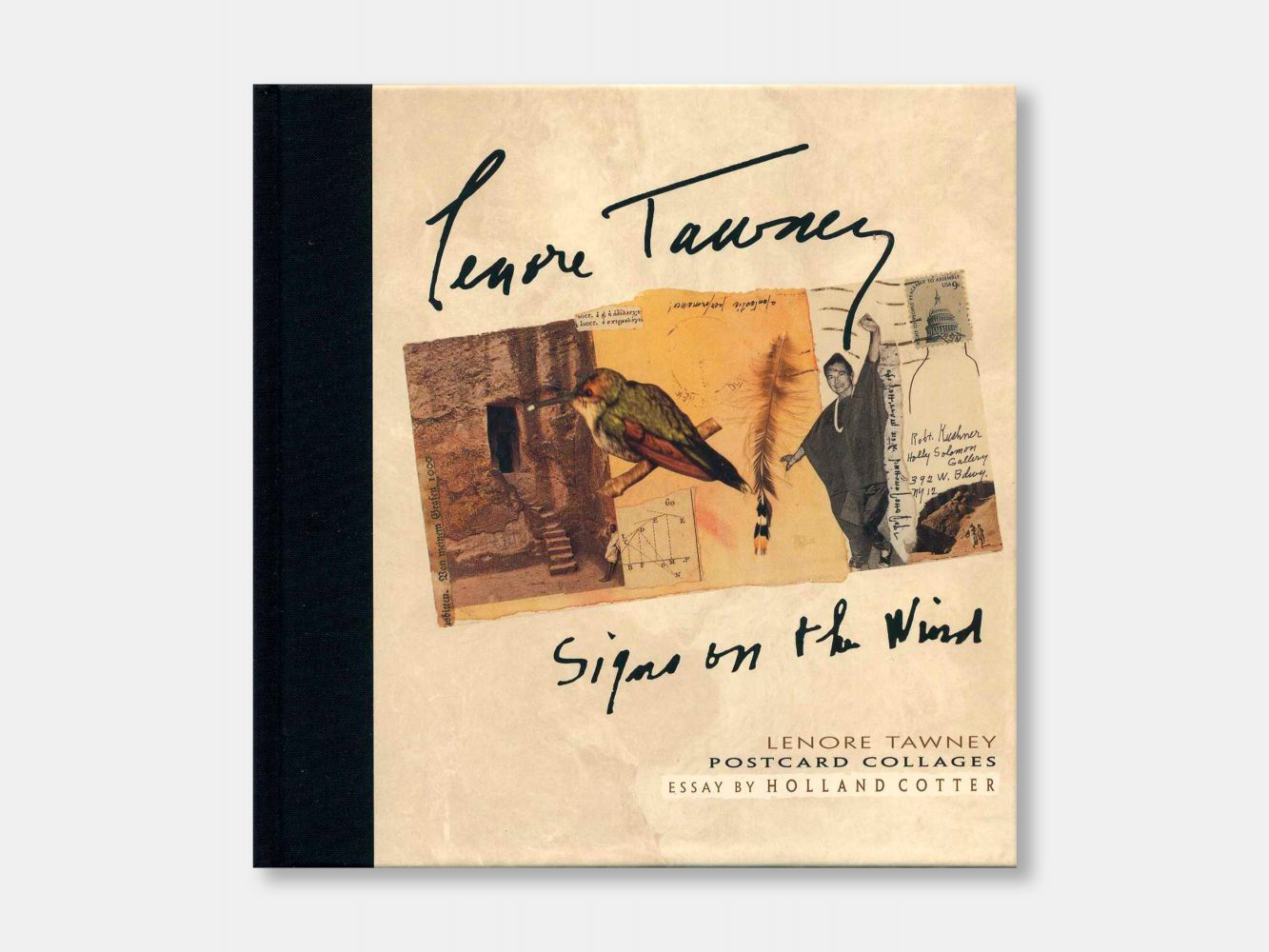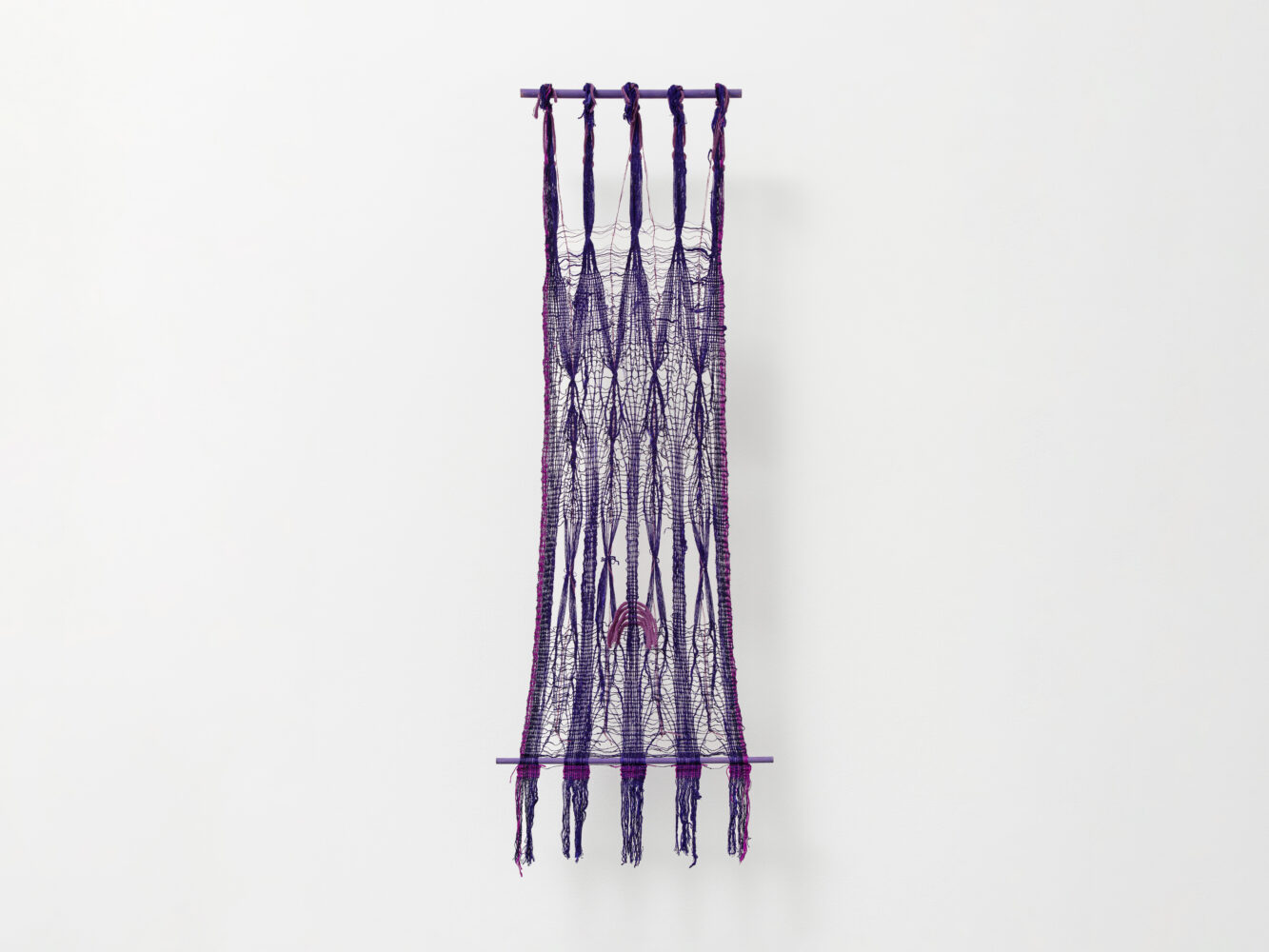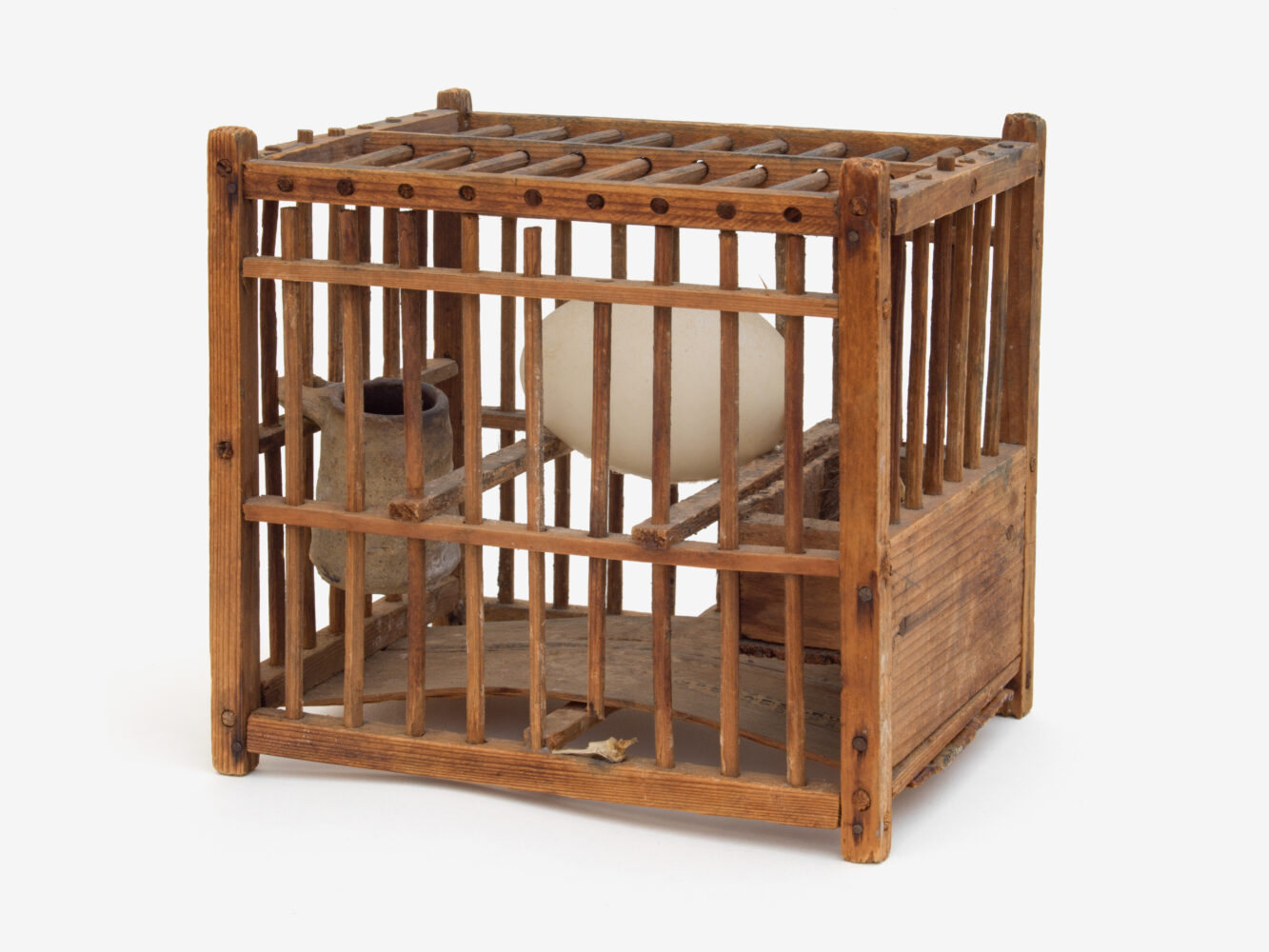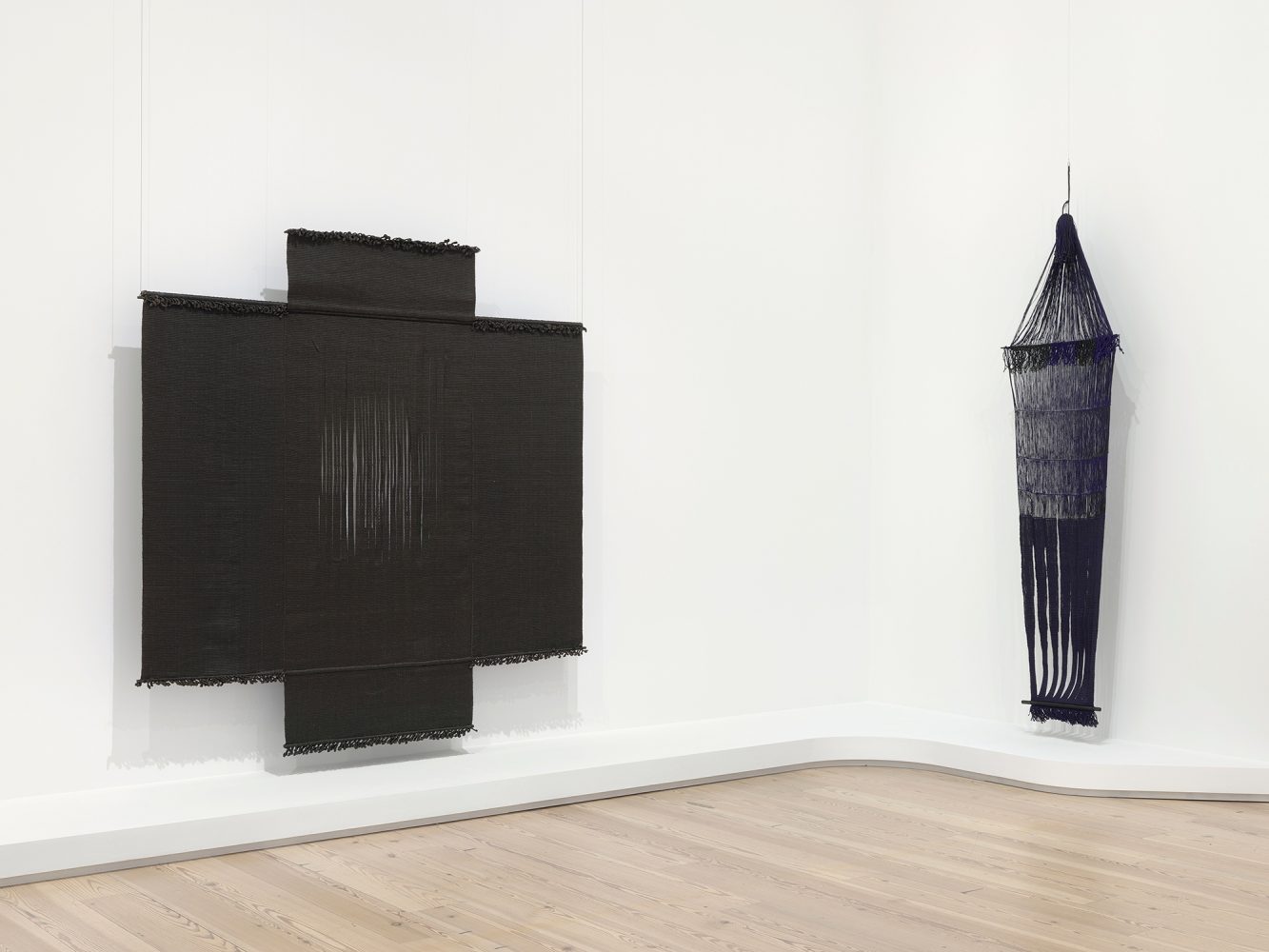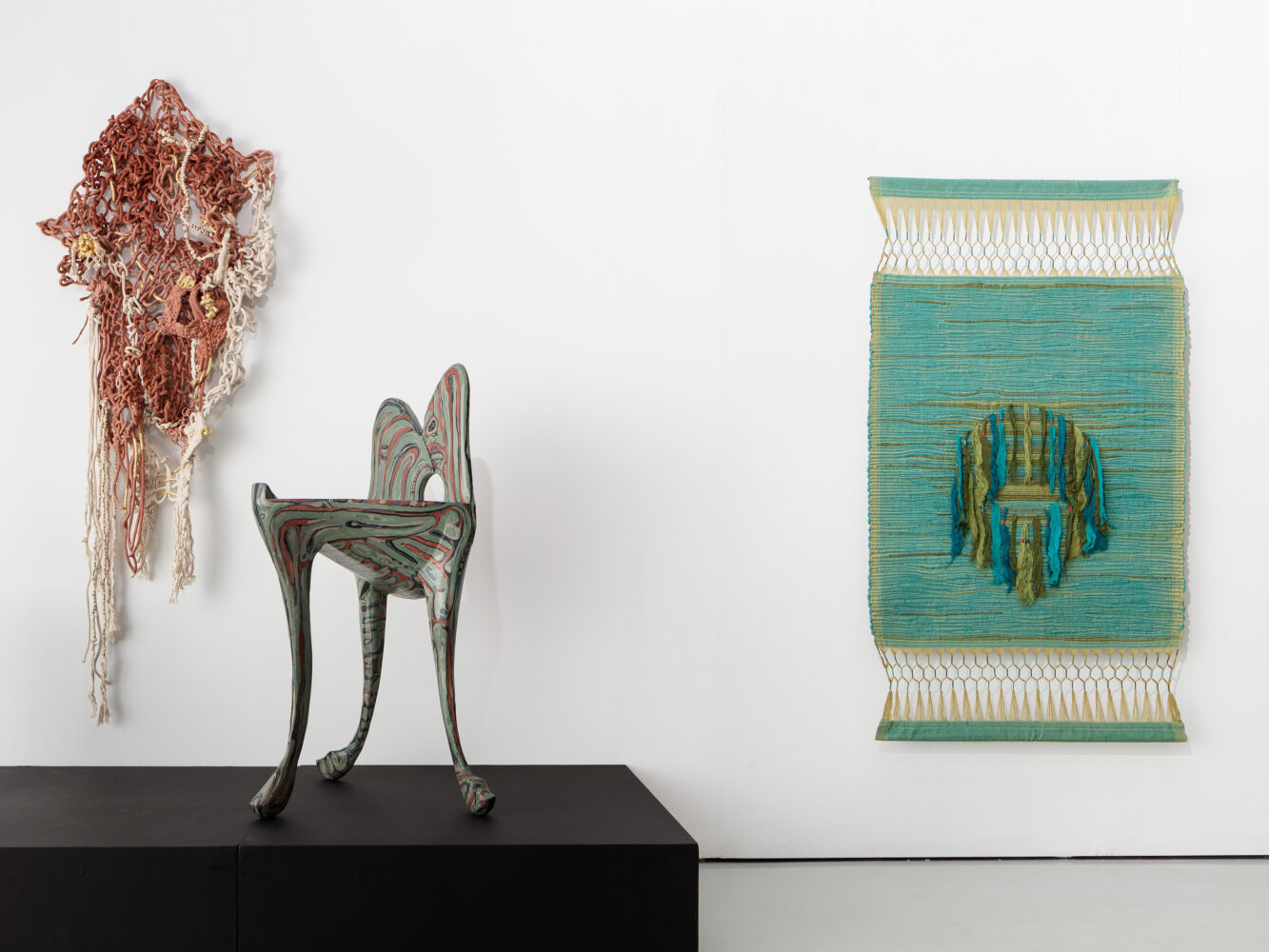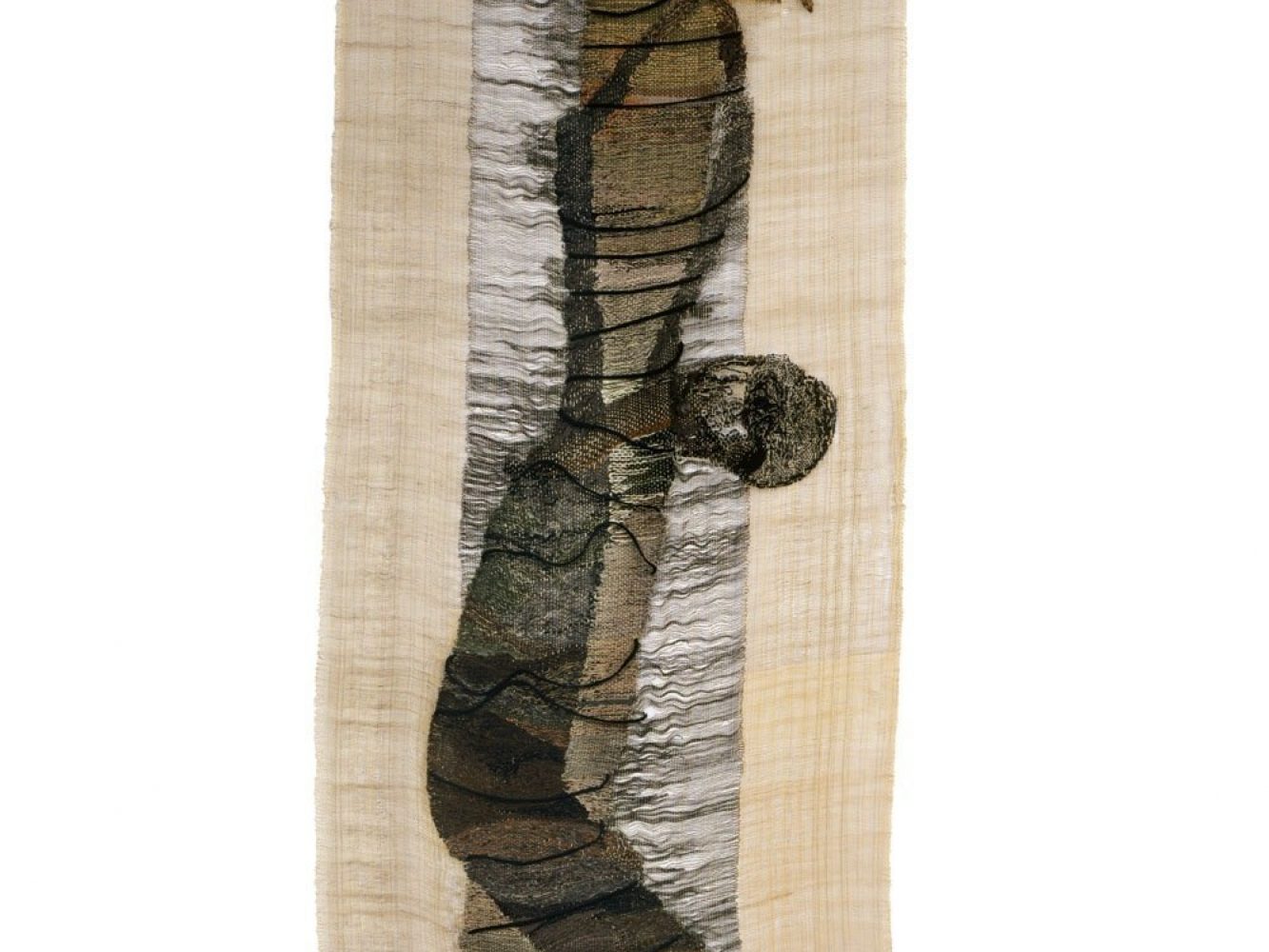Biography
Over the course of five decades, American artist Lenore Tawney (b.1907, Lorain, Ohio, US; d.2007, New York, US) developed a multi-faceted practice that included monumental sculptural installations, box-like assemblages, intricate collages and graphic drawings. Tawney’s primary material was linen thread, both a component found in nearly all of her three-dimensional compositions and the basis of her creative process.
The artist’s practice was defined early on by its ability to challenge boundaries. Her initial studies at the Chicago Institute of Design in the 1940s, where she took classes with László Moholy-Nagy and Alexander Archipenko, introduced her to the interdisciplinary approach of the Bauhaus. A description of Tawney’s first solo show at the Chicago Public Library in 1955 described ‘[works] where design, drawing, and sculpture can all be put to use.’
Tawney’s career as an artist began when she was 50 years old; it continued up until her death, aged 100. Her work evolved after she relocated to New York from Chicago in 1957, initially renting a studio at Coenties Slip in Lower Manhattan. She became part of the now legendary artistic community that included Jasper Johns, Ellsworth Kelly and Agnes Martin, with whom Tawney developed a close and long-standing friendship. The only text Martin ever published about another artist was for Tawney’s first New York exhibition at the Staten Island Museum in 1961.
The artist’s breakthrough came with her revolutionary ‘woven forms’ of the early 1960s, which transcended the limitations of textiles by leaving much of the fabric unwoven and transparent. Her novel technique of leaving thread open – allowing it to move up and down within the composition, having not been beaten into a fixed weave – generated a malleable quality. Tawney intended for these irregularly shaped, elongated objects to be hung in space, turning the typically flat, rectangular structure of textile pieces into sculptural objects. Her interest in physical presence culminated in the sublime ‘Cloud Sculptures’, an important transition in her practice at the end of the 1970s. These hugely influential works consist of thousands of individual threads descending at regular intervals from elevated canvas panels.
Throughout her career, Tawney was inspired by states of existence and natural phenomena. She practiced meditation throughout her life which, combined with her interest in Indian spiritualism and Zen Buddhism, was hugely influential on her approach to making. ‘You first have to be in touch with yourself inside very deeply in order to do something,’ she noted, ‘to discover this place is our aim.’ The artist’s studio also played a critical role in her evolution, acting as a sacred environment that allowed for stillness and contemplation. ‘I want to be under the leaf’, she commented, to be quiet until I find my true self.’ Her source materials helped to create an iconography that centred around geometric compositions (squared circles; circles divided by crosses) and referred to elemental forces such as water, fire and light. ‘I sometimes think of my work as breath,’ Tawney reflected, alluding to the life cycles with which her work engaged.
Although Tawney’s most productive periods were bookended by the emergence of minimalism and feminist art, she largely refrained from identifying with movements, committed instead to following her own personal trajectory and innermost thoughts. As she herself concluded: ‘the biggest problem is thinking about an audience, that’s the one thing you have to lose’.
Works
-
![]() Inquisition, 1961
Inquisition, 1961 -
![]() Acanthus, 1962
Acanthus, 1962 -
![]() Untitled, 1964
Untitled, 1964 -
![]() Crystal Light, c. 1965
Crystal Light, c. 1965 -
![]() Untitled, 1965
Untitled, 1965 -
![]() Path II, 1965–71
Path II, 1965–71 -
![]() Untitled, c.1968
Untitled, c.1968 -
![]() Union of Water and Fire, 1974
Union of Water and Fire, 1974 -
![]() Dove, 1974
Dove, 1974 -
![]() Entablature, 1974-92
Entablature, 1974-92 -
![]() Entablature, 1974-94
Entablature, 1974-94 -
![]() Shining in Vacant Space, 1975
Shining in Vacant Space, 1975 -
![]() In Fields of Light, 1975
In Fields of Light, 1975 -
![]() Untitled, 1978
Untitled, 1978 -
![]() Cloud Labyrinth, 1983
Cloud Labyrinth, 1983 -
![]() And Whom Is My Dearest One, 1988
And Whom Is My Dearest One, 1988 -
![]() Or to an Illegible Stone, 1989
Or to an Illegible Stone, 1989 -
![]() The Lilies Have Frozen and the Lake is Dark, 1993
The Lilies Have Frozen and the Lake is Dark, 1993 -
![]() Untitled, 1994
Untitled, 1994 -
![]() Cloud I, c.1996
Cloud I, c.1996 -
![]() Drawing in Air VI, 1997
Drawing in Air VI, 1997 -
![]() Drawing in Air III, 1997
Drawing in Air III, 1997
Press
Exhibitions
Books
News

Lenore Tawney & Sheila Hicks
in ‘Making Their Mark: Works from the Shah Garg Collection’, Kemper Art Museum, Washington University in St Louis

Lenore Tawney
in ‘Looking Back / The 15th White Columns Annual’, Selected by Elisabeth Kley, White Columns, New York

Sheila Hicks & Lenore Tawney
in ‘Woven Histories: Textiles and Modern Abstraction’, National Gallery of Canada, Ottawa

Gee’s Bend Quiltmakers, Sheila Hicks & Lenore Tawney
in ‘Unravel: The Power and Politics of Textiles in Art’, Stedelijk Museum Amsterdam

Lenore Tawney
in ‘Subversive, Skilled, Sublime: Fiber Art by Women’, Renwick Gallery of the Smithsonian American Art Museum, Washington

Lenore Tawney
in ‘Toshiko Takaezu: Worlds Within’, The Isamu Noguchi Foundation and Garden Museum, New York

Maria Bartuszová, Lygia Clark, Lenore Tawney, Hannah Wilke & Sheila Hicks
in ‘Beyond Form: Lines of Abstraction, 1950-1970’, Turner Contemporary, Margate

Lenore Tawney
in ‘Takaezu & Tawney: An Artist is a Poet’, Crystal Bridges Museum of American Art, Arkansas

Sheila Hicks & Lenore Tawney
in ‘Weaving Abstraction in Ancient and Modern Art’, The Metropolitan Museum of Art, New York

Gee’s Bend Quiltmakers, Sheila Hicks, Veronica Ryan and Lenore Tawney
in ‘Making Their Mark’, Shar Garg Foundation, New York

Lenore Tawney
in ‘Scandinavian Design and the United States, 1890–1980’, Los Angeles County Museum of Art, Los Angeles

Lenore Tawney
in ‘Inspired Encounters: Women Artists and the Legacies of Modern Art’, David Rockefeller Creative Arts Center, New York

Lenore Tawney
in ‘Of Mythic Worlds: Works from the Distant Past through the Present’, The Drawing Center, New York

Ana Mendieta & Lenore Tawney
in ‘Never Done: 100 Years of Women in Politics and Beyond’, The Tang Museum, Saratoga Springs, New York

